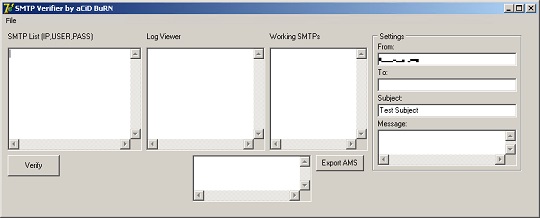Trojan.MSIL.REVENGERAT.BA
UDS:Backdoor.MSIL.Bladabindi.gen (KASPERSKY); Trojan:MSIL/Malgent!MSR (MICROSOFT)
Windows


Threat Type: Trojan
Destructiveness: No
Encrypted: No
In the wild: Yes
OVERVIEW
This Trojan arrives on a system as a file dropped by other malware or as a file downloaded unknowingly by users when visiting malicious sites.
TECHNICAL DETAILS
Arrival Details
This Trojan arrives on a system as a file dropped by other malware or as a file downloaded unknowingly by users when visiting malicious sites.
Installation
This Trojan drops the following files:
- %Application Data%\Microsoft\Windows\Templates\svchost.zip → Deleted afterwards
- %Application Data%\Microsoft\Windows\Templates\explorer.zip → Deleted afterwards
(Note: %Application Data% is the current user's Application Data folder, which is usually C:\Documents and Settings\{user name}\Application Data on Windows 2000(32-bit), XP, and Server 2003(32-bit), or C:\Users\{user name}\AppData\Roaming on Windows Vista, 7, 8, 8.1, 2008(64-bit), 2012(64-bit) and 10(64-bit).)
It drops and executes the following files:
- %User Temp%\Setup.exe → HIDDEN attribute
- {Malware Path}\smtp-verifier .exe → HIDDEN attribute
- %Application Data%\Microsoft\Windows\Templates\svchost.exe → HIDDEN attribute; Extracted file from svchost.zip
- %Application Data%\Microsoft\Windows\Templates\explorer.exe → HIDDEN attribute; Extracted file from explorer.zip; detected as Backdoor.MSIL.REVENGERAT.BB
It adds the following processes:
- "%User Temp%\Setup.exe"
- "{Malware Path}\smtp-verifier .exe"
- "%Application Data%\Microsoft\Windows\Templates\svchost.exe"
- "%Application Data%\Microsoft\Windows\Templates\explorer.exe"
(Note: %User Temp% is the current user's Temp folder, which is usually C:\Documents and Settings\{user name}\Local Settings\Temp on Windows 2000(32-bit), XP, and Server 2003(32-bit), or C:\Users\{user name}\AppData\Local\Temp on Windows Vista, 7, 8, 8.1, 2008(64-bit), 2012(64-bit) and 10(64-bit).. %Application Data% is the current user's Application Data folder, which is usually C:\Documents and Settings\{user name}\Application Data on Windows 2000(32-bit), XP, and Server 2003(32-bit), or C:\Users\{user name}\AppData\Roaming on Windows Vista, 7, 8, 8.1, 2008(64-bit), 2012(64-bit) and 10(64-bit).)
Autostart Technique
This Trojan adds the following registry entries to enable its automatic execution at every system startup:
HKEY_CURRENT_USER\Software\Microsoft\
Windows\CurrentVersion\Run
Microsoft Corporation Security = %Application Data%\Microsoft\Windows\Templates\svchost.exe
Download Routine
This Trojan connects to the following website(s) to download and execute a malicious file:
- https://{BLOCKED}heap.blogspot.com/
- If C2 above is inaccessible, it connects to the following URL to get another C2:
- http://{BLOCKED}host.thedreamsop.com/2023/explorer.txt
It saves the files it downloads using the following names:
- It scans for the following tags "" from the C2 content, decodes, and saves the file:
- %Application Data%\Microsoft\Windows\Templates\explorer.zip
(Note: %Application Data% is the current user's Application Data folder, which is usually C:\Documents and Settings\{user name}\Application Data on Windows 2000(32-bit), XP, and Server 2003(32-bit), or C:\Users\{user name}\AppData\Roaming on Windows Vista, 7, 8, 8.1, 2008(64-bit), 2012(64-bit) and 10(64-bit).)
Other Details
This Trojan does the following:
- It masquerades as an smtp-validator tool.
- The executed file "{Malware Path}\smtp-verifier .exe" displays the following GUI:

- The contents of the zip files (svchost.zip and explorer.zip) are extracted using hardcoded passwords.
SOLUTION
Step 1
Trend Micro Predictive Machine Learning detects and blocks malware at the first sign of its existence, before it executes on your system. When enabled, your Trend Micro product detects this malware under the following machine learning name:
-
TROJ.Win32.TRX.XXPE50FFF077
Step 2
Before doing any scans, Windows 7, Windows 8, Windows 8.1, and Windows 10 users must disable System Restore to allow full scanning of their computers.
Step 3
Note that not all files, folders, and registry keys and entries are installed on your computer during this malware's/spyware's/grayware's execution. This may be due to incomplete installation or other operating system conditions. If you do not find the same files/folders/registry information, please proceed to the next step.
Step 4
Delete this registry value
Important: Editing the Windows Registry incorrectly can lead to irreversible system malfunction. Please do this step only if you know how or you can ask assistance from your system administrator. Else, check this Microsoft article first before modifying your computer's registry.
- In HKEY_CURRENT_USER\Software\Microsoft\Windows\CurrentVersion\Run
- Microsoft Corporation Security =%Application Data%\Microsoft\Windows\Templates\svchost.exe
- Microsoft Corporation Security =%Application Data%\Microsoft\Windows\Templates\svchost.exe
Step 5
Search and delete this file
- %User Temp%\Setup.exe
- {Malware Path}\smtp-verifier .exe
- %Application Data%\Microsoft\Windows\Templates\svchost.zip
- %Application Data%\Microsoft\Windows\Templates\svchost.exe
- %Application Data%\Microsoft\Windows\Templates\explorer.zip
- %Application Data%\Microsoft\Windows\Templates\explorer.exe
Step 6
Scan your computer with your Trend Micro product to delete files detected as Trojan.MSIL.REVENGERAT.BA. If the detected files have already been cleaned, deleted, or quarantined by your Trend Micro product, no further step is required. You may opt to simply delete the quarantined files. Please check the following Trend Micro Support pages for more information:
Did this description help? Tell us how we did.

